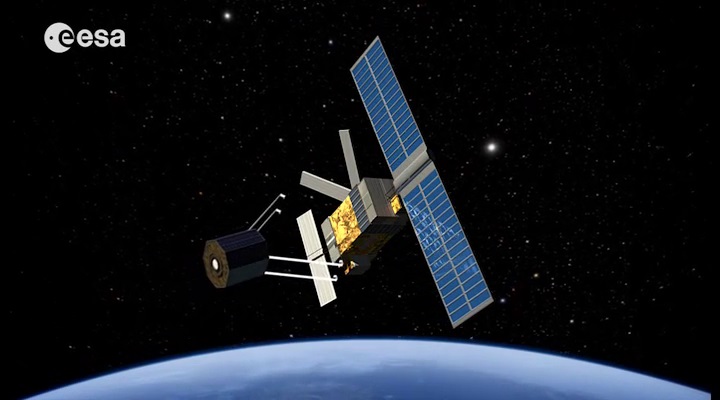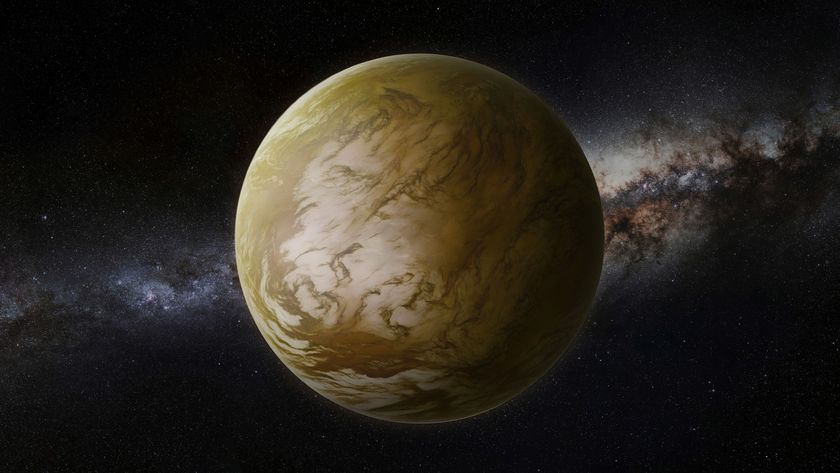Fishing for Space Junk: Europe's Wild Idea to Clean the Cosmos

Using a specialized capture mechanism, the European Space Agency (ESA) plans to lasso a large, abandoned satellite drifting through space and pull it down to burn up in the atmosphere.
The e.DeOrbit mission, part of the agency's Clean Space Initiative, is designed to capture an ESA-owned satellite that is in low orbit around the Earth but no longer functioning. If all goes according to plan, a capture mechanism — such as a robotic arm, net or harpoon — will latch on to the target in 2023 and bring it down to where it can safely burn up in Earth's atmosphere, ESA officials said in a statement. You can see a video on how the space junk cleaner works here.
However, reeling in such a large piece of space junk is no easy feat. There are several challenges that ESA scientists will have to tackle: They will have to identify the fast-moving target, find a safe and secure way to chase it down and capture it, and synchronize orbital paths with the satellite to bring it down into Earth's atmosphere in a controlled manner. [7 Wild Ideas to Clean Up Space Junk]
"While the concept is straightforward, the implementation is not — e.DeOrbit will be like nothing ESA has ever attempted before," Robin Biesbroek, ESA's study manager, said in the statement. "The chaser satellite requires extremely sophisticated guidance, navigation and control to synchronize motion and then capture its target, guided, in turn, by advanced image processing, blending inputs from optical and multispectral cameras as well as 'laser radar' lidar to derive a precise, reliable sense of the target and its motion."
After decades of space exploration, there are an estimated 29,000 human-made objects larger than 10 centimeters (4 inches) orbiting Earth, increasing the risk of catastrophic collisions, ESA officials said in a video unveiling the target of the e.DeOrbit mission.
Earlier this year, ESA demonstrated the concept of capturing an abandoned satellite by shooting a net at a drone.
"In addition, e.DeOrbit needs a reliable method of capturing its target," Biesbroek said. "We are now looking at a net, harpoon or gripper, as well as advanced robotics to secure the two satellites together. Finally, the satellite also requires a very high level of autonomy, because continuous real-time control from the ground will not be practical, especially during the crucial capture phase."
Get the Space.com Newsletter
Breaking space news, the latest updates on rocket launches, skywatching events and more!
Initiatives to capture and remove dead, abandoned space junk become even more essential as the number of space launches per year continues to increase. The ESA video said a 1-cm (2.5 inches) piece of space debris could "strike a working satellite with the force of a hand grenade," which, in turn, could cause a subsequent cascade of collisions and harm any new satellites being launched into space.
Follow Samantha Mathewson @Sam_Ashley13. Follow us @Spacedotcom, Facebook and Google+. Original article on Space.com.
Join our Space Forums to keep talking space on the latest missions, night sky and more! And if you have a news tip, correction or comment, let us know at: community@space.com.

Samantha Mathewson joined Space.com as an intern in the summer of 2016. She received a B.A. in Journalism and Environmental Science at the University of New Haven, in Connecticut. Previously, her work has been published in Nature World News. When not writing or reading about science, Samantha enjoys traveling to new places and taking photos! You can follow her on Twitter @Sam_Ashley13.


